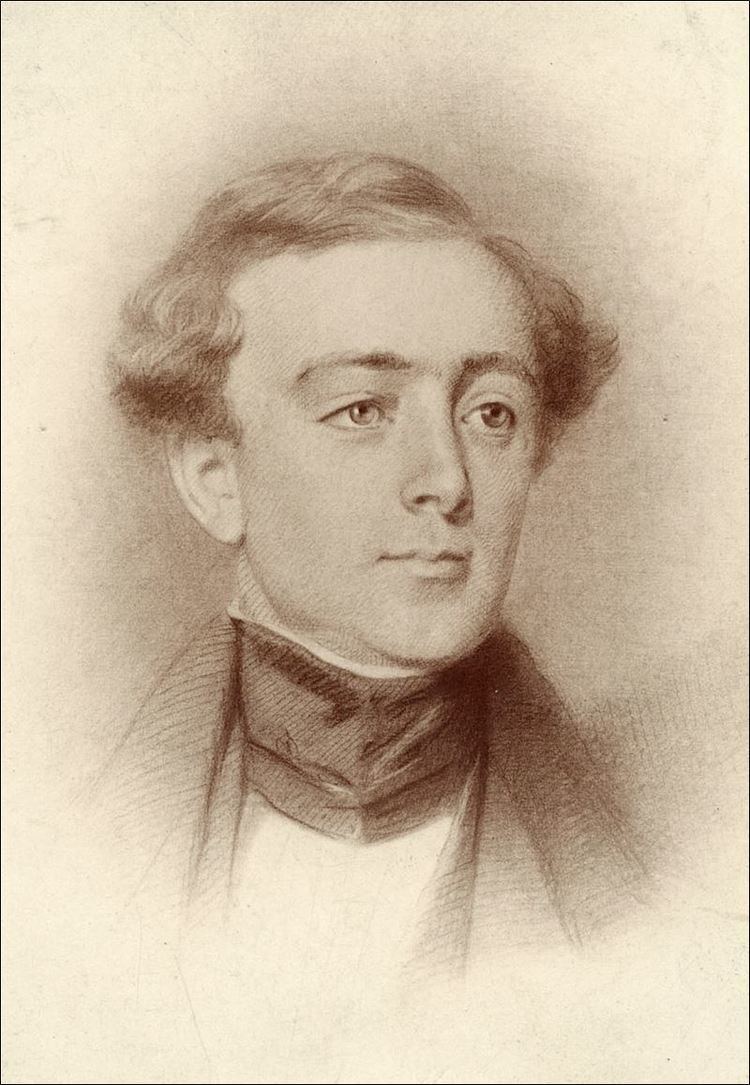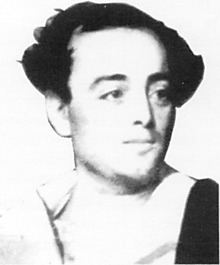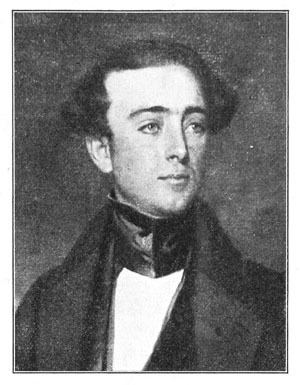Spouse Julia Phelps (m. 1838) Parents John Thomson Mason | Name Stevens Mason | |
 | ||
Preceded by John S. Horneras Territorial Governor Born October 27, 1811Leesburg, Virginia ( 1811-10-27 ) Died January 4, 1843, New York City, New York, United States Similar People William Woodbridge, Lewis Cass, John S Barry, Alpheus Felch, G Mennen Williams | ||
Grandparents Stevens Thomson Mason | ||
Governor stevens t mason reinterment
Stevens Thomson Mason (October 27, 1811 – January 4, 1843) was an American politician who served as the 1st Governor of Michigan from 1835 to 1840. Coming to political prominence at an early age, Mason was appointed his state's acting Territorial Secretary by Andrew Jackson at 19, becoming the acting territorial governor soon thereafter in 1834 at 22. As territorial governor, Mason was instrumental in guiding Michigan to statehood, which was secured in 1837. A member of the Democratic Party, he was elected as Michigan's first state governor in 1835, where he would serve until 1840. Elected at 23 and taking office at 24, Mason was and remains the youngest state governor in American history.
Contents
- Governor stevens t mason reinterment
- Don faber the boy governor stevens t mason 01 24 13
- Early life in Virginia and Kentucky
- Life and politics in Michigan Territory
- First governor of the state of Michigan
- Retirement and death in New York
- Marriage and children
- Places named in Masons honor
- References

Don faber the boy governor stevens t mason 01 24 13
Early life in Virginia and Kentucky

Mason was born near Leesburg in Loudoun County, Virginia, into a politically powerful family. His great-grandfather, Thomson Mason (1733–1785) was chief justice of the Virginia supreme court and brother of George Mason (1725–1792), who took part in the Constitutional Convention. His grandfather, Stevens Thomson Mason, was a U.S. Senator from Virginia. His uncle, Armistead Thomson Mason (1787–1819), was also a U.S. Senator from Virginia. His uncles by marriage, Benjamin Howard (1760–1814) and William Taylor Barry (1784–1835), both served in the Kentucky House of Representatives and were U.S. Representatives from Kentucky. Howard was Governor of Louisiana (Missouri) Territory, 1810–12 and Governor of Missouri Territory, 1812–13. Barry served as U.S. Senator from Kentucky, 1814–16 and then had a long career in a number of Kentucky government positions, and ultimately became Postmaster General, 1829–35.

In 1812, Mason’s father, John Thomson Mason (1787–1850), left the Mason family stronghold in Virginia to attempt to make his own fortune in Lexington, Kentucky. In 1817, President James Monroe appointed the elder Mason United States marshal. While his business ventures were a complete failure and the family became nearly broke in the 1820s, he was a lawyer and land agent from an influential family, and went on to become an important figure in the Texas Revolution.
Life and politics in Michigan Territory

John Mason was appointed Secretary of Michigan Territory and superintendent of Indian affairs in 1830 by President Andrew Jackson. Young Stevens was more politically savvy than his father and helped to protect him from schemes launched by anti-Jackson forces. This gained him notice from the territorial governor, Lewis Cass. In 1831, President Jackson sent his father on a mission to Mexico and named Stevens to replace his father as Secretary, at the age of nineteen before he could even vote. At about the same time, Governor Cass became Jackson’s Secretary of War. George Bryan Porter was named to replace Cass, but he was frequently absent and Mason was, for all practical purposes, the acting governor during this time, leading to his nickname of the "Boy Governor."
Mason was influential in petitioning for Michigan statehood. When the first petition in 1832 was not acted upon, Mason commissioned a territorial census. When the census was completed in 1834, it determined that 86,000 people lived in the lower peninsula, more than the 60,000 required for statehood by the Northwest Ordinance of 1787. A dispute over a strip of land, the Toledo Strip, claimed by both Michigan and Ohio led to the Toledo War. President Jackson appointed Benjamin Chew Howard of Baltimore, and Richard Rush of Philadelphia to serve on a commission to arbitrate the dispute but could not persuade Mason to back down. Not wanting to alienate political support in Ohio, President Jackson removed Mason from office in 1835 and appointed John S. (“Little Jack”) Horner as his replacement.
First governor of the state of Michigan
Although replaced by Horner, Mason was still popular in Michigan. Voters approved a constitution on 5 October 1835 and elected Mason as governor. However, the U.S. Congress refused to recognize Michigan as a state until the dispute with Ohio was resolved.
In 1836, facing financial difficulties due to Michigan not being recognized as a state, Mason agreed to a compromise reached by the U.S. Congress and agreed to cede the disputed land to Ohio in exchange for the western two-thirds of the Upper Peninsula (Michigan already included the eastern third). A convention in September 1836 refused to go along with Mason, but Mason finally prevailed in a second convention in December 1836. On January 26, 1837, Michigan was admitted to the Union.
In 1835, Mason had initiated an ambitious internal improvements program, which included development of three railroads and two canals (one of which was the Clinton-Kalamazoo Canal). Mason was re-elected in 1837, but the state’s economy soon began to suffer from the effects of the Panic of 1837. Earlier in 1837, Mason had negotiated to fund the internal improvements program through the sale of $5,000,000 in bonds. This arrangement fell apart in 1837 and following bankruptcies by both the company building the canal and the bank backing the loans, the state was left with over $2,000,000 in bad debt. During his business trips to New York to finance his internal improvements program, Mason became acquainted with Julia Phelps and the two married on November 1, 1838.
Rather than risking a contentious campaign and the possibility of an embarrassing defeat in the elections of 1839, Mason instead decided to give up politics and attempt a private law practice. His successor as governor, an old political rival, William Woodbridge, was determined to place the blame for Michigan’s financial mess on Mason, and charged Mason with corruption related to the $5,000,000 loan. Mason attempted to defend himself, but his reputation was ruined.
Retirement and death in New York
In 1841, Mason left Michigan for New York City, where his wealthy father-in-law, Thaddeus Phelps, lived. Mason tried to establish a law practice there, but struggled to build a clientele. He caught pneumonia in the winter of 1842 and died at the age of thirty-one during the night of January 4, 1843, though his date of death is sometimes listed as January 5.
Mason was initially interred at New York Marble Cemetery, but on June 4, 1905, his remains were brought from New York to Detroit, accompanied by his sister Emily Mason, then age 92; his daughter, Mrs. Dorothy Mason Wright; three grandsons; and several grand-nephews and great-grandchildren. Services were conducted by Rev. David M. Cooper, who had known Mason as governor, 70 years earlier. Other notable attendees included then governor, Fred M. Warner, and the mayor of Detroit, George P. Codd. His remains were interred at Capitol Park, the site of the old Michigan Capitol. Later, a bronze statue of Mason on a granite pedestal was erected over the grave. The statue was created by sculptor Albert Weinert and depicted the young Mason in a confident pose.
On September 3, 2009, officials announced that the park would be reconfigured and the monument moved several yards. But when the crews began to excavate the site, they discovered no grave. After four days of searching, the vault containing the remains was located on June 29, 2010, a few yards south of its original site. It was believed the grave was moved from its 1905 location in 1955 to make room for a bus terminal.
On the 199th anniversary of his birth, October 27, 2010, Mason was reburied for the fourth time in a newly built vault in the pedestal beneath the bronze statue designed by Albert Weinert. Mason's great-great-great grandnephew, who resides in Grosse Ile, Michigan, witnessed the reinterment. The current Dean of the Cathedral Church of St. Paul, where funeral services were held for Mason in 1843, officiated at the ceremony. Prior to the reinterment, Mason's remains were transported to Lansing where they lay in state in the Capitol Building. Mason was only the third Michigan governor to lie in state in the Capitol.
Among his other accomplishments, Mason created an educational system and relocated the University of Michigan to Ann Arbor.
Marriage and children
Mason married Julia Elizabeth Phelps in New York City on November 1, 1838. The couple had three children:
